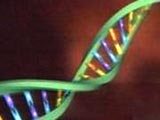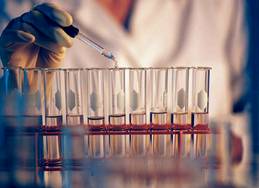Background
For the better part of the past 300 years, scientists have strived to “reverse engineer” the cell in an attempt to discover the genetic mysteries locked within its walls. The modern conception of genetics originated with the 19th Century Austrian monk Gregor Mendel, whose work confirmed that traits are inherited from one generation to the next in discrete informational units which interact in well-defined ways.
In 1909, Danish botanist Wilhelm Johannsen used the term gene to describe these fundamental units of heredity, a term derived from the Greek words genesis (birth) or genos (origin). Simply stated, according to this current view of genetics, the various physical and behavioral characteristics of an organism—its phenotypes—are a function of variations in genotype, the organisms’ specific set of genes, each set of which denotes a specific trait.
Simply stated, according to this current view of genetics, the various physical and behavioral characteristics of an organism—its phenotypes—are a function of variations in genotype, the organisms’ specific set of genes, each set of which denotes a specific trait.
Every human inherits 23 sets of chromosomes from their parents, each chromosome being comprised of a single macro (large)molecule of DNA (deoxyribonucleic acid). DNA is a long polymer made up of more simple units called nucleotides. DNA is a nucleic acid which contains the genetic instructions that guide living organisms to develop and function properly. The principal role of cellular DNA is the long-term storage of the information relating to reproduction of the organism, e.g., how to construct proteins, hormones, enzymes, RNA, other cell components, etc. The thousands of genes—arranged on strands of DNA—are the specific segments that carry this genetic information and, like a conductor, orchestrate all of the necessary components into the meaningful whole of life itself.
 As a human fetus develops in its mothers’ womb, thousands of genes direct the incredible growth process that is ensuing. Following birth, many of these genes are naturally turned down/deactivated, while others activate and begin to direct a new set of growth and development parameters. Between the second and third decade of human life, many previously-activated genes begin their turning down and deactivating processes. As we age, there is a gradual loss of genetic power as more and more gene activity progressively degrades in accordance with genetically-controlled mechanisms that govern their activity.
As a human fetus develops in its mothers’ womb, thousands of genes direct the incredible growth process that is ensuing. Following birth, many of these genes are naturally turned down/deactivated, while others activate and begin to direct a new set of growth and development parameters. Between the second and third decade of human life, many previously-activated genes begin their turning down and deactivating processes. As we age, there is a gradual loss of genetic power as more and more gene activity progressively degrades in accordance with genetically-controlled mechanisms that govern their activity.
In addition to the natural biological mechanisms that deactivate genes, environmental factors also play a role. Lifestyle choices such as improper nutrition; excessive alcohol consumption; smoking; the toxic status of one’s physical environment; and lack of physical activity are factors that contribute to the aging process in several ways, but also by deactivating genes.
It is known that the reproductive capability and growth of organisms—genetics—can be altered by various other means. For example, researchers have known since the 1930s that the maximum life-span of many species can be extended by reducing food consumption by 30-40% of normal intake, while at the same time providing sufficient nutrition. This area of research was originally proposed by the renowned gerontologist Dr. Roy Walford of the UCLA School of Medicine, and has come to be known as calorie restriction (CR), calorie restriction with optimal nutrition (CRON), or calorie restriction with adequate nutrition (CRAN)—all of these terms being more-or-less synonymous.
Researchers recently have discovered a genetic link to this phenomenon:
The positive health effects, and particularly CR’s ability to extend maximum life-span, have now been demonstrated in all species tested including fish, fruit flies, hamsters, mice, spiders, worms, and even yeast cells. There is ongoing research with two species of monkeys (rhesus and squirrel) and, although it is too soon to draw a definitive conclusion, current observations suggest the response of primates to CR is almost identical to that of the other species tested. The noted effects include lower body temperatures; lower levels of glucose and insulin within the bloodstream; less chronic disease; and more youthful levels of various hormones including dehydroepiandrosterone (DHEA)—a chemical (prohormone) which has gained considerable attention in recent years as a possible longevity promoter.
Similar attempts in humans by life-extension enthusiasts using a self-administered CR protocol are ongoing as well. Because of humans’ considerably longer life-span in comparison to most other animals—and the relatively short duration of the ongoing human experiments—no final conclusions have been drawn regarding the human response to calorie restriction, although it is assumed the results will be similar to those already demonstrated in the many other animal species tested.
 The life-extension effect of calorie restriction is dramatic, prolonging the life of laboratory animals by up to 60%, and yeast cells by up to 70%. [1] This would be equivalent to increasing the human life-span to 140-160 years. There are several mechanisms apparently responsible for this effect. In both rodents and primates, the reduction of glucose and insulin levels and increased cellular sensitivity to insulin are among the most consistent responses noted, occurring within weeks of being initiated. The alteration of glucose and insulin levels as a result of CR implicate cellular metabolism as being intimately involved in the life-extension process. Although there are likely several mechanisms in play, the reduction of glucose and insulin levels may signal cells to adopt a “self-protective” mode, sensing that food supplies are scarce. Cellular maintenance and repair—i.e., preservation—may become the predominant metabolic focus, thereby enhancing cellular function, hence longevity.
The life-extension effect of calorie restriction is dramatic, prolonging the life of laboratory animals by up to 60%, and yeast cells by up to 70%. [1] This would be equivalent to increasing the human life-span to 140-160 years. There are several mechanisms apparently responsible for this effect. In both rodents and primates, the reduction of glucose and insulin levels and increased cellular sensitivity to insulin are among the most consistent responses noted, occurring within weeks of being initiated. The alteration of glucose and insulin levels as a result of CR implicate cellular metabolism as being intimately involved in the life-extension process. Although there are likely several mechanisms in play, the reduction of glucose and insulin levels may signal cells to adopt a “self-protective” mode, sensing that food supplies are scarce. Cellular maintenance and repair—i.e., preservation—may become the predominant metabolic focus, thereby enhancing cellular function, hence longevity.
Scientists have recently identified a class of “longevity genes” called sirtuins (sir-TOO-inz), derived from the term “silent information regulator proteins.” They appear to be universal regulators of aging in all living organisms —i.e., they are the central regulators of the aging process. It is the activation or “switching on” of these genes by environmental cues including reduced glucose and insulin levels following calorie restriction that induce cellular changes such as adopting the protective mode of self preservation (as an adaptation technique), which includes the slowing of metabolism and enhancement of cellular respiration. [2]
Unfortunately, the degree of calorie restriction in humans necessary to accomplish a potential life-span and health-span increase would require a daily dietary intake of only about 1,750 calories. This austere, impractical regimen would be acceptable only to the most stalwart of individuals, to understate the point. For most Westerners, it would be tantamount to asking teenagers not to daydream about sex. For most of us, as they say, “It ain’t gonna happen.”
Spurred on by the great potential benefits of calorie restriction (and the reactivation of certain genes linked to the process) without the necessity of enduring a continuous state of semi-starvation, scientists have been searching for ways of mimicking the effects of CR without its attendant trials and tribulations. Thus, the search for calorie restriction mimetics has begun. The solution is hoped to be found in the form of a pill-form dietary supplement.
 Over the past several decades, and in particular the last several years, researchers have discovered many dietary ingredients which individually have demonstrated their ability to slow the aging process in both man and animal—and some have been shown to extend the life-span of multiple species of animals. In combination, their synergy yields even more profound results.
Over the past several decades, and in particular the last several years, researchers have discovered many dietary ingredients which individually have demonstrated their ability to slow the aging process in both man and animal—and some have been shown to extend the life-span of multiple species of animals. In combination, their synergy yields even more profound results.
Laboratory animals are typically used in anti-aging research because most species have a much shorter life-span than humans. Therefore, instead of waiting 65-80 years to observe the results of experimental procedures with dietary supplements on humans, the use of various species of animals allows researchers to obtain results in a much more realistic time frame—from several months to several years, not many decades as would be required in human longevity studies. Notwithstanding this limitation, an overwhelming compendium of research not only confirms health-span extension in humans via supplementation with specific nutraceutical substances, but points toward the potential of life extension as well. TimeGuard™ contains over three dozen such nutraceutical ingredients which are related to lengthening the health-span in humans, and in addition may have implications for life-span issues.
Notes
- Ingram, D.K., et al. “Development of calorie restriction mimetics as a prolongevity strategy.” Annals of the New York Academy of Sciences, 1019:412-423, June 2004.
- Ferguson, L.R. “Role of plant polyphenols in genomic stability.” Mutation Research, 475:89-111, 2001.
